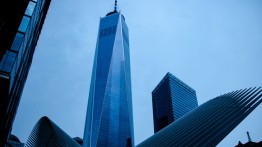COOPERMADE: One World Trade Center

Two Cooper Union alumni played pivotal roles in the redevelopment of the World Trade Center site: Daniel Libeskind AR’70 and T.J. Gottesdiener AR’79.
Liebeskind, renowned for his design of the Jewish Museum in Berlin, took the helm of the awesome project after winning the commission with his “Memory Foundations” design. His plan dedicated half the 16-acre site to public space in the form of a museum and memorial remembering the events of September 11, and set out to rectify some of the weak points of the original complex. Raised on a plinth, the previous site felt isolated from the city after Radio Row, a vibrant corner of the neighborhood nicknamed for its many electronics stores, was demolished to make way for it. In Liebeskind’s scheme, the World Trade Center site reconnected the complex to the street grid, brought retail shops to street level to reinvigorate foot traffic, and added an arts center and a transportation hub for subways and PATH trains to the neighborhood.
Libeskind's master plan also recognized the singular place the Towers held in New York’s skyline. To that end, a distinctive skyscraper was crucial to the redevelopment plan. T. J. Gottesdiener, a managing partner at Skidmore, Owings & Merrill (SOM), who has been called “the most famous architect few have heard of,” oversaw the construction of this 1,776 foot high rise known as One World Trade Center. The building’s tapered form was designed to invoke its fellow New York architectural icons the Chrysler and Empire State buildings. With its chamfered sides culminating in eight isosceles triangles, it resembles a faceted crystal whose surface continually changes with the day’s light.





